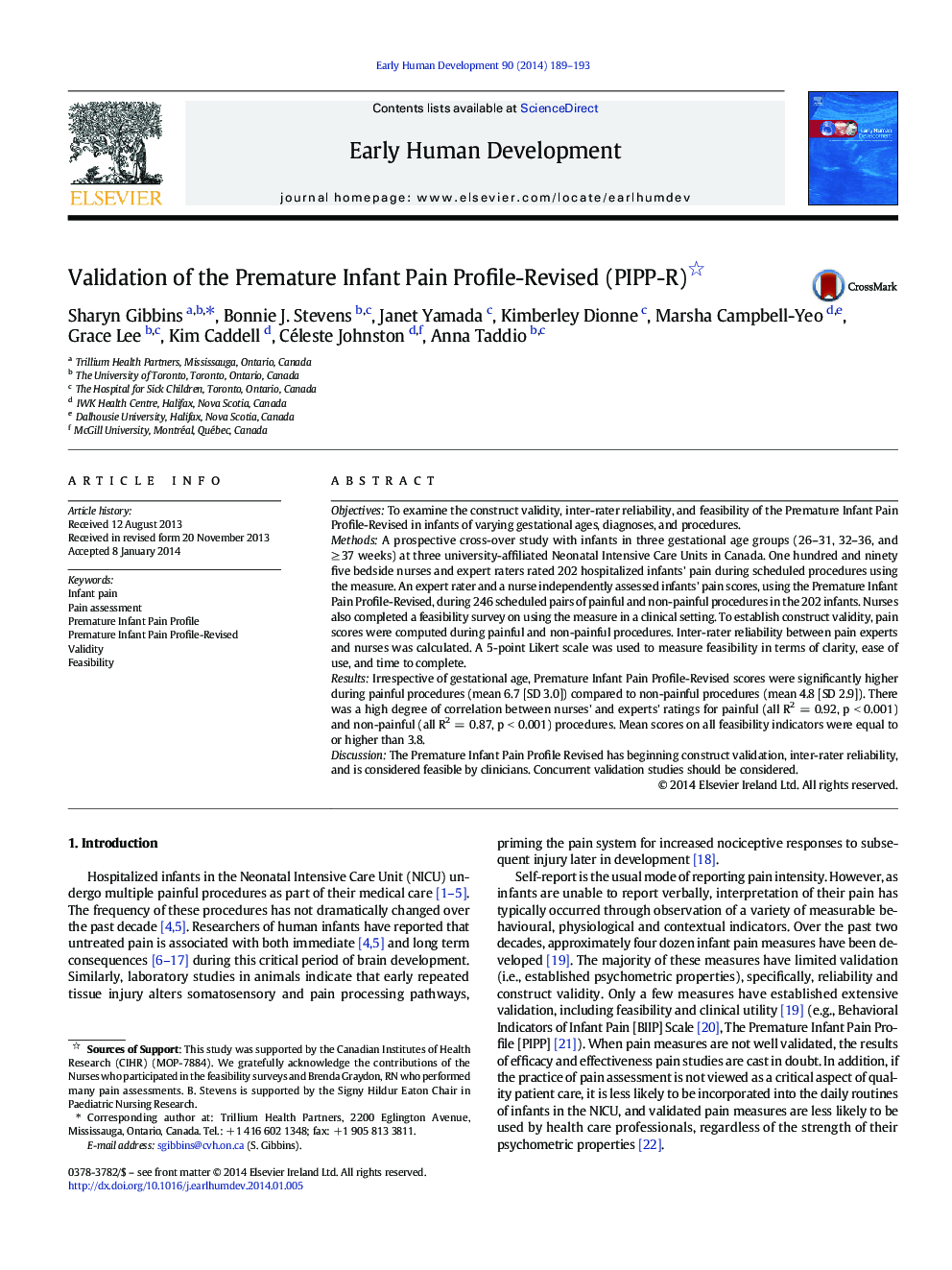| Article ID | Journal | Published Year | Pages | File Type |
|---|---|---|---|---|
| 3916621 | Early Human Development | 2014 | 5 Pages |
ObjectivesTo examine the construct validity, inter-rater reliability, and feasibility of the Premature Infant Pain Profile-Revised in infants of varying gestational ages, diagnoses, and procedures.MethodsA prospective cross-over study with infants in three gestational age groups (26–31, 32–36, and ≥ 37 weeks) at three university-affiliated Neonatal Intensive Care Units in Canada. One hundred and ninety five bedside nurses and expert raters rated 202 hospitalized infants' pain during scheduled procedures using the measure. An expert rater and a nurse independently assessed infants' pain scores, using the Premature Infant Pain Profile-Revised, during 246 scheduled pairs of painful and non-painful procedures in the 202 infants. Nurses also completed a feasibility survey on using the measure in a clinical setting. To establish construct validity, pain scores were computed during painful and non-painful procedures. Inter-rater reliability between pain experts and nurses was calculated. A 5-point Likert scale was used to measure feasibility in terms of clarity, ease of use, and time to complete.ResultsIrrespective of gestational age, Premature Infant Pain Profile-Revised scores were significantly higher during painful procedures (mean 6.7 [SD 3.0]) compared to non-painful procedures (mean 4.8 [SD 2.9]). There was a high degree of correlation between nurses' and experts' ratings for painful (all R2 = 0.92, p < 0.001) and non-painful (all R2 = 0.87, p < 0.001) procedures. Mean scores on all feasibility indicators were equal to or higher than 3.8.DiscussionThe Premature Infant Pain Profile Revised has beginning construct validation, inter-rater reliability, and is considered feasible by clinicians. Concurrent validation studies should be considered.
